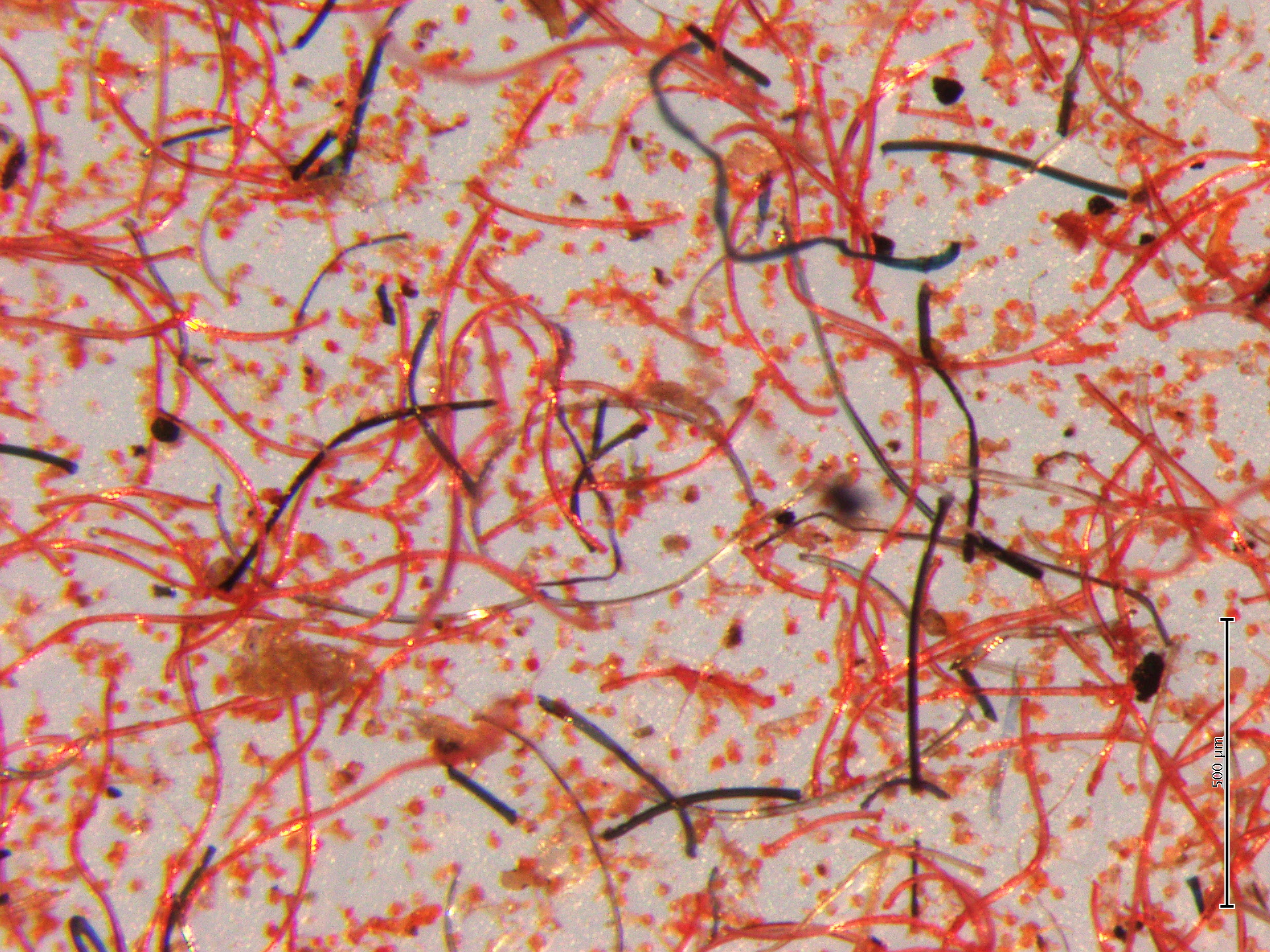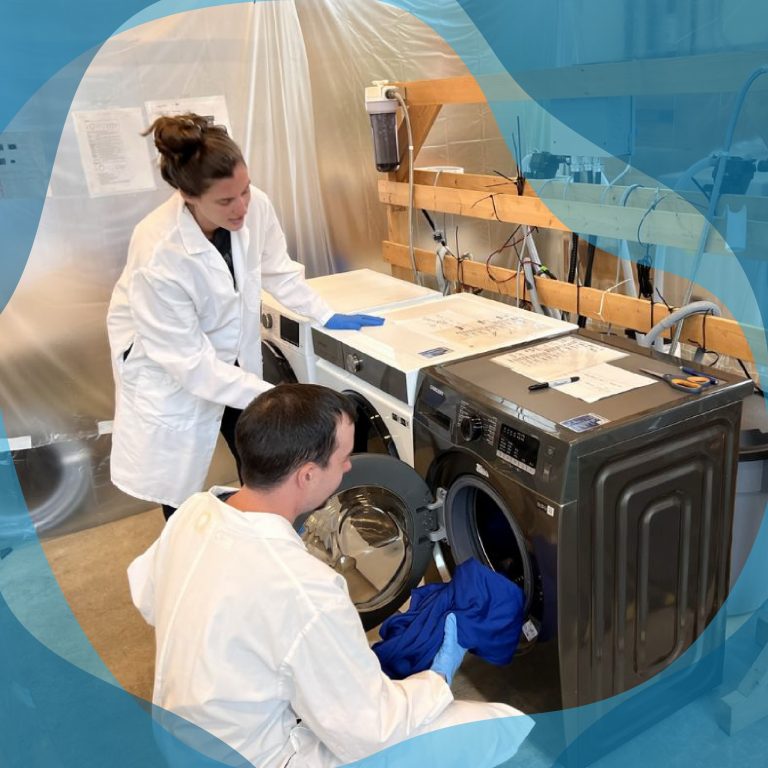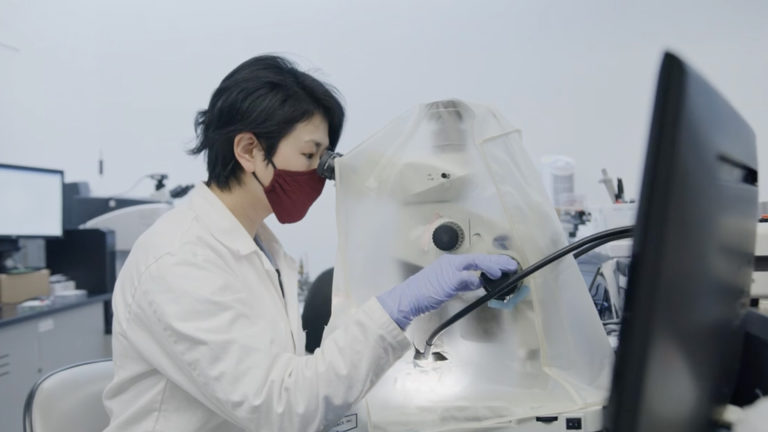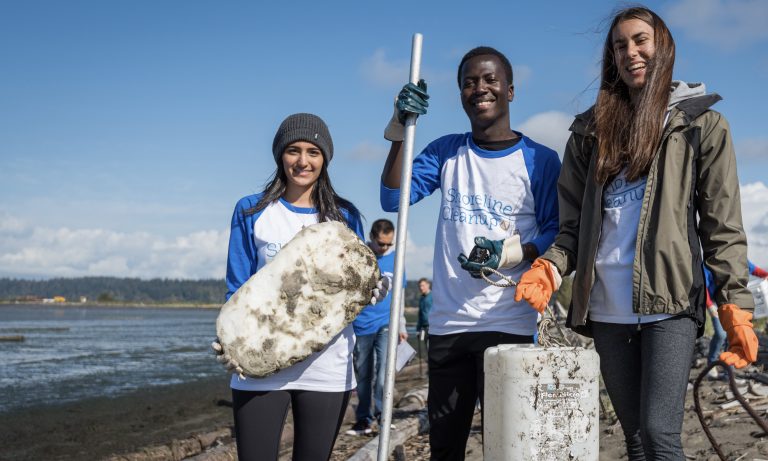VANCOUVER, BC, CANADA, July 20, 2021 — A groundbreaking new study by Ocean Wise, “Domestic laundry and microfiber pollution: Exploring fiber shedding from consumer apparel textiles”, published in the scientific journal PLOS ONE, finds it is possible to drastically reduce microfiber pollution through a combination of solutions in home laundry, manufacturing and textile design.
Microfibers –fibers less than 5 mm long – are polluting the world’s oceans and have been found in plankton, seafood consumed by humans, in the stomachs of marine mammals, across the Arctic Ocean and at depths of up to 1,000 meters. However, this study by Ocean Wise tested two different, easily accessible, washing machine lint traps – LINT LUV-R and Filtrol – and found up to 90% of polyester microfibers were captured.
This is a promising opportunity for consumers to take action as well as for washing machine manufacturers to incorporate microfiber capture into product designs to stop the leak of microplastics into the environment.
The study also points to actions that clothing brands and manufactures can take to reduce microfiber shedding. Most textiles had higher fiber loss in the first laundry cycle, so the Ocean Wise researchers suggest that brands and their suppliers could take action by “implementing a wash step for new materials at manufacturing facilities.”
Important take-aways from the study
Findings from this research can help guide consumers, clothing brands, textile manufacturers, washing machine producers and wastewater treatment facilities toward implementing impactful interventions to prevent microfibers from polluting our oceans. Highlights include:
• Lint filters tested captured up to 90% of microfibers from home laundry and are a solution for consumers.
• There is a huge range in shedding rates from different textiles. The highest shedding materials lost over 800 times more fibers than the lowest shedding materials. This illustrates the strong potential for more sustainable clothing design.
• Fleece can be designed to have low shed rates. Although some fleece and mixed fleece textiles had the highest shed rates, there were also some fleeces tested that had quite low shed rates.
• Most fibers were typically released in first laundry wash – removing excess fibers at the manufacturing site and exploring design solutions to minimize this waste represent a significant opportunity for apparel companies.
• Fiber shedding was positively correlated with fabric thickness for nylon and polyester. Thicker materials are an opportunity for design solutions.
• Microplastics other than fibers were released from some textiles. There is a need to better understand their sources (e.g. coatings, manufacturing process), and role in microplastic contamination of the environment.
“What this study clearly demonstrates is that clothing brands and manufactures have a unique opportunity to incorporate these findings into designing for more ocean-friendly products. But it is not just the brands, there are steps we can take today to stop the leak of microfibers from home laundry. Together we can achieve the systemic change we need to protect against microfiber pollution.” explains Laura Hardman, Ocean Wise’s Director for Plastics, including the microfiber partnership.
“We are thrilled to see the results of this long-term research released, and are excited to put these recommendations into action in our design process, textiles development and manufacturing. It’s our hope that this research offers practical, science-backed measures for our industry as a whole to adopt” says Katie Wilson, Senior Manager Social and Environmental Sustainability at Arc’teryx.
Turning the tide on ocean pollution from clothing
Apparel brands taking action at the design and manufacturing stage is a potential major solution to reducing the release of microfibers in the environment. But consumers can also play a role by:
• Installing a washing machine lint trap, washing in cold water, and only laundering clothes when necessary.
• Choosing to purchase clothing from brands that are leaders in addressing microfiber pollution and sustainable apparel practices.
• Supporting organizations like Ocean Wise that are undertaking research and finding actionable solutions.
This study is one of the outcomes of Ocean Wise’s microfiber partnership – a collaboration with the apparel industry and government agencies to find the sources and solutions to the widespread presence of microfibers in the global environment. The partner organizations that provided Ocean Wise with textile samples and funding for this research include Arc’teryx, Environment and Climate Change Canada, MEC, Metro Vancouver, Patagonia and REI.
In addition to the supporters of this study, Ocean Wise’s work tackling microplastic pollution now also includes Aritzia, Cotton Inc., Flotilla Foundation, Loblaw, Outdoor Industry Association, Paul M Angell Foundation and SC Johnson.





